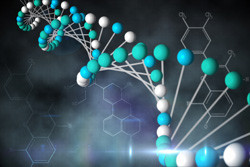The mechanisms of hyperinflammation
CGD is a primary immunodeficiency disease affecting one in 200 000 people. Typically diagnosed in the early childhood years, it is characterised by serious recurrent bacterial and fungal infections affecting lungs, skin, liver, lymph nodes and gastrointestinal tract. CGD is linked to genetic deficiencies impairing production of reactive oxygen species in macrophages and neutrophils in response to an infection. It is also characterised by hyperinflammation with formation of excessive and persistent granulomas, or areas of tissue inflammation containing neutrophils and macrophages. While granulomas normally serve to fight infection, in CGD they often form even in the absence of microorganisms. Persistent granulomas are also formed in other immune diseases, such as Crohn's disease and sarcoidosis. Thus, the benefits of understanding the mechanism of granulomatous response would not be limited to CGD. The project 'Regulation of inflammation by macrophages in chronic granulomatous diseases' (RIMINCGD) was dedicated to the role of macrophages, the major components of hyperinflammatory granulomatous response. In granulomas, macrophages are enlarged (termed epithelioid macrophages) and sometimes contain several nuclei (multi-nucleated giant cells). The mechanism of macrophage transformation in the context of granuloma formation was the focus of this study. Molecular and cellular mechanisms were studied in vitro using molecular biology and genetic approaches, followed by in vivo studies using an animal model. Project scientists found a new pathway of macrophage polyploidisation and multi-nucleated giant cell formation different from the previously known cytokine-induced macrophage multinucleation by cell-to-cell fusion. The newly found mechanism defined macrophage growth by pathogen-mediated cell cycle regulation and polyploidisation. This pathway can contribute to the maintenance of granulomas during immunity to mycobacterial infection or autoimmune hyperinflammation. The obtained results may lead to the development of new therapeutic strategies to address hyperinflammatory granulomatous responses.







